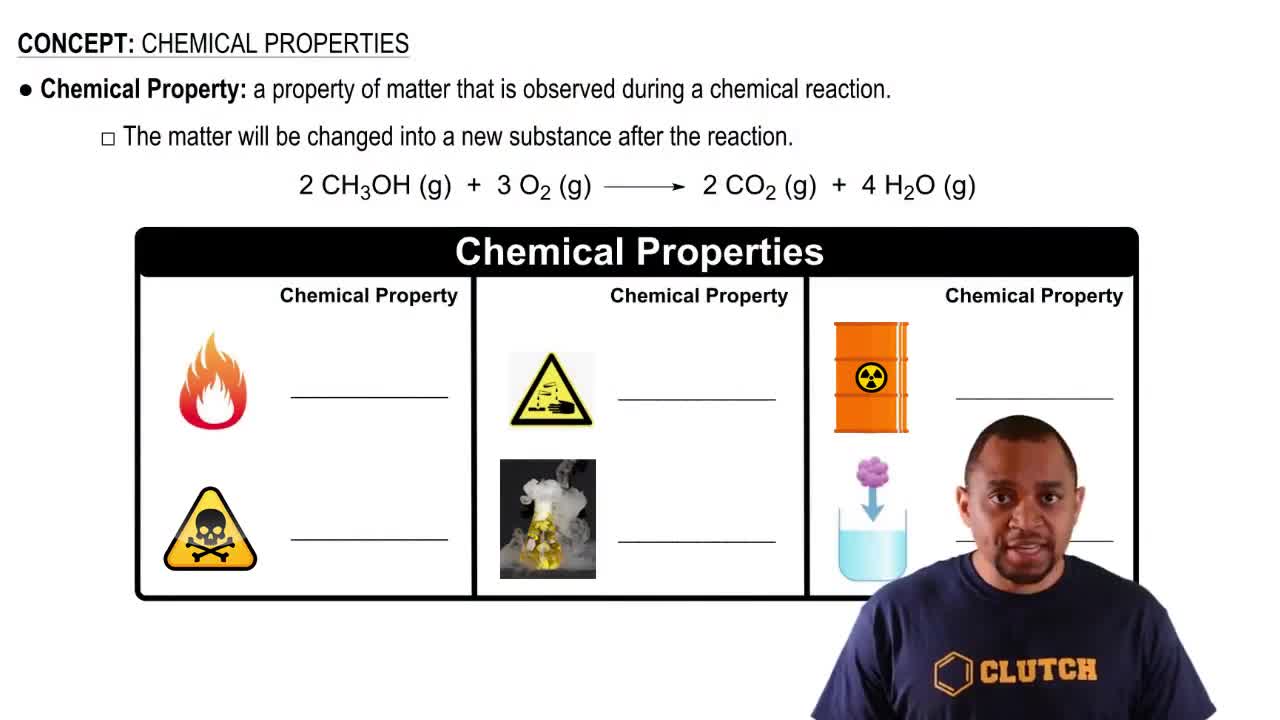Here are the essential concepts you must grasp in order to answer the question correctly.
Chemical Reactivity
Chemical reactivity refers to the tendency of a substance to undergo chemical changes and form new substances. It is influenced by factors such as the element's position in the periodic table, its electronegativity, and the types of bonds it can form. Understanding reactivity helps predict how different elements will interact with one another.
Recommended video:
Periodic Trends
Periodic trends are patterns in the properties of elements that can be observed across the periodic table. Key trends include atomic radius, ionization energy, and electronegativity, which affect how elements react chemically. Elements in the same group often exhibit similar reactivity due to their similar valence electron configurations.
Recommended video:
Valence Electrons
Valence electrons are the outermost electrons of an atom and play a crucial role in chemical bonding and reactivity. The number of valence electrons determines how an element will interact with others, including its ability to gain, lose, or share electrons. Elements with similar valence electron configurations typically exhibit similar chemical behaviors.
Recommended video:
Transition Metals Valence Electrons
 Verified step by step guidance
Verified step by step guidance


